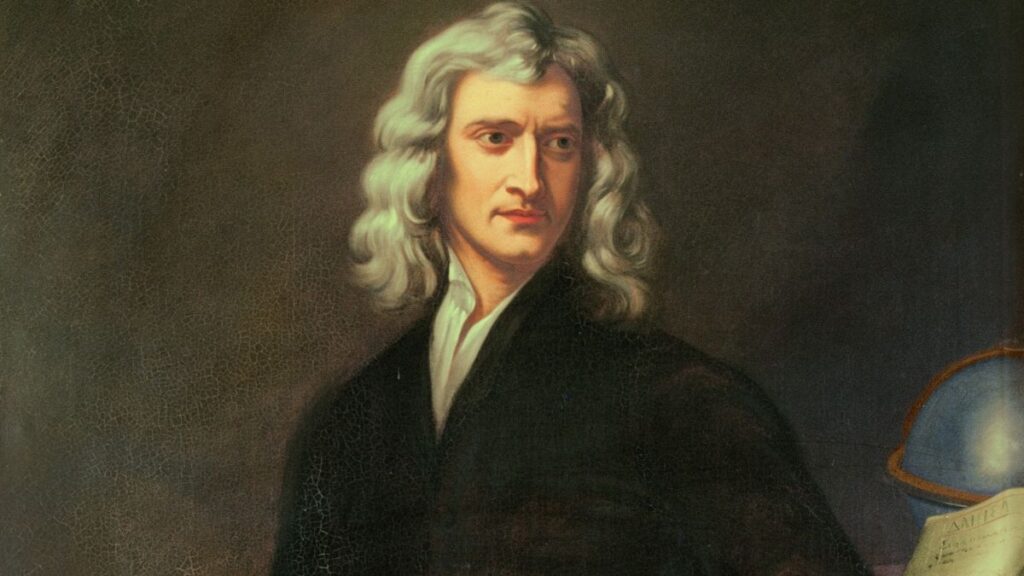The final person is Isaac Newton, full name Sir Isaac Newton, an English physicist and mathematician who was born on December 25, 1642 in Woolsthorpe, Lincolnshire, and died on March 20, 1727 in London. of the 17th-century scientific revolution. He laid the groundwork for contemporary physical optics when he found that the white light’s composition added color phenomena to the study of light. His third law of motion, a cornerstone of contemporary physics, contributed to the development of the law of gravity in mechanics. He created the infinite calculus in mathematics. One of the most significant contributions to modern science is Isaac Newton’s Philosophiae Naturalis Principia Mathematica (1687), which outlines the mathematical foundations of natural philosophy.

Effects on Structure
Newton was the lone child of a Wools Thorpe resident, Isaac Newton, who passed away three months prior, and Hannah Ashough. Galileo Galilei passed away in Arcetri, close to Florence, that same year; Newton would eventually acquire his ideas of mathematical science and carry out his work. It was not anticipated that Newton, a frail child, would live to be 84 years old, much less the first day of his life. Soon after his mother passed away, Isaac’s father—who had been taken from him before he was even born—also passed away.
His mother’s second husband, the wealthy minister Barnabas Smith, had moved to a village nearby to raise a son and two daughters, leaving young Isaac with his grandmother. Within two years, he had also remarried. Isaac was effectively separated from his mother for nine years until Barnabas Smith’s death in 1653; it is said that this was a heartbreaking event in which he was called out. He detested his stepfather, that much is clear. When he examined the state of his soul in 1662 and compiled a, he recalled “threaten[ing] my father and mother Smith to burn them, and the house above ‘them.”.brief list of sins. The intense insecurities that Newton carried with him throughout his life and that made him anxious when his work was published, as well as the careless violence he defended, were both rooted in his youth. is a young person. effects of the scientific revolution.
When Newton arrived in Cambridge in 1661, the movement that is now known as the Scientific Revolution was well under way, and many of the key publications of modern science had already been made. The heliocentric model of the universe was developed by astronomers from Nicolaus Copernicus to Johannes Kepler. On the basis of inertia’s principle, Galileo had already suggested the framework for a brand-new machine. Philosophers have started to formulate novel theories about nature as a sophisticated, abstract machine under the leadership of René Descartes. However, none of this may be the case for universities in Europe, such as Cambridge. They remained the stronghold of the classical Aristotelianism, which had a geocentric understanding of the universe and treated nature qualitatively rather than quantitatively. working while being ill.
The color wheel was made by who?
The greatest academic career in the college’s history had not yet begun when Newton earned his bachelor’s degree in April 1665. The only thing he recorded in his notebooks was his academic progress, despite the fact that he had independently learned and assimilated new philosophies and mathematics. He was forced to stay at home for the majority of the following two years as a result of the university’s closure in 1665 due to illness as he thought back on the lessons he had picked up in his free time. The first definition in the book “Of Colors,” which contains many of the concepts outlined in his Opticks, was expanded by Newton in the plague year as he laid the calculus foundations. At this point, he examines the circularly moving object and, using the Moon and the planet as examples, derives the inverse square relationship, which states that the radially directed force acting on the planet decreases with the square of its distance from the Sun. This relationship is significant for the law of gravity.These discoveries are not known to the general public.
Authored by Isaac Newton
In 1667, following the university’s restoration, Newton was chosen as a Fellow of Trinity College. Two years later, Isaac Barrow, a Lucasian professor of mathematics who had given John Collins in London Newton’s De Analysi, quit his position to devote himself to the gods and suggested Newton as a replacement. Newton was exempt from teaching obligations during the term, but a yearly lectureship was required. As his first subject, he selected his work on optics. Over the course of the following three years (1670–1672), his lectures resulted in the essay “On Colors,” which was later revised to become the first book of his Optics.
Overall Gravitation
Nearly five years later, in August 1684, British astronomer Edmond Halley visited Newton in his home country. Newton still struggled with the orbital change at the time. Newton had promised to send the show, but when he learned that he had found the solution, he broke his promise. De Motu (“On Motion”), a brief tract, was delivered to him three months later. Newton is currently working to enhance and expand it. In just two and a half years, De Motu’s book was transformed into Philosophiae Naturalis Principia Mathematica, which is now considered to be Newton’s masterpiece and the foundation of modern science.
Related Posts
Donald Trump – Best Guide in 2023
